
How to Use LD2420 MMWave Sensor: Examples, Pinouts, and Specs
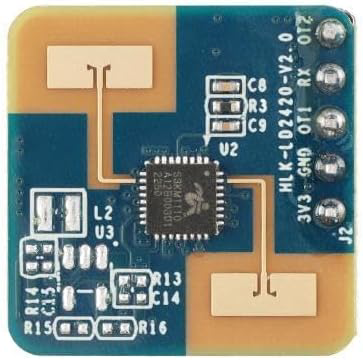
 Design with LD2420 MMWave Sensor in Cirkit Designer
Design with LD2420 MMWave Sensor in Cirkit DesignerIntroduction
The LD2420 is a millimeter-wave (MMWave) sensor designed for motion detection and presence sensing applications. Operating in the 24 GHz frequency range, it offers high sensitivity and accuracy, making it ideal for detecting movement in a variety of environments. Its compact design and robust performance make it a popular choice for smart home devices, security systems, and automation solutions.
Explore Projects Built with LD2420 MMWave Sensor
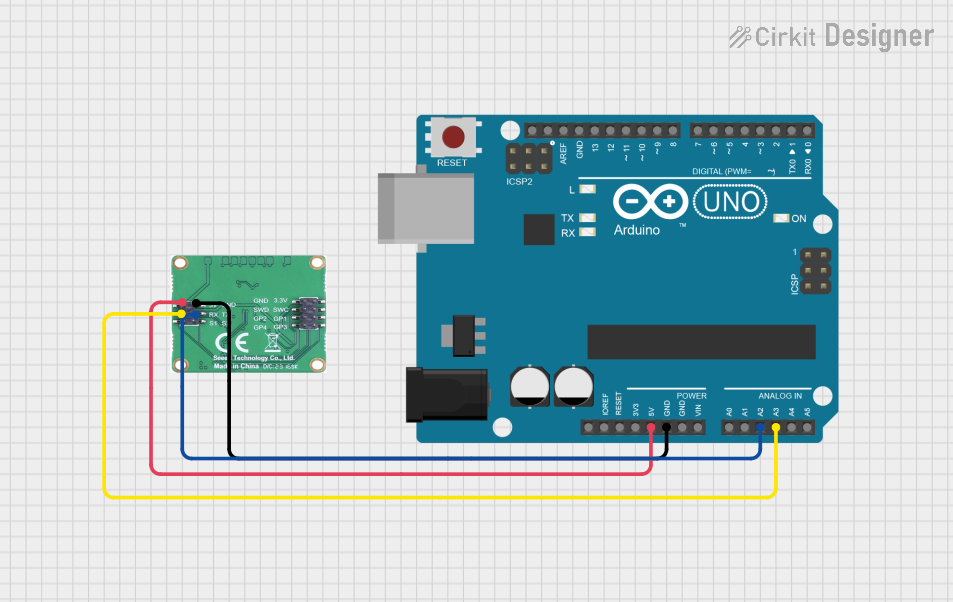
 Open Project in Cirkit Designer
Open Project in Cirkit Designer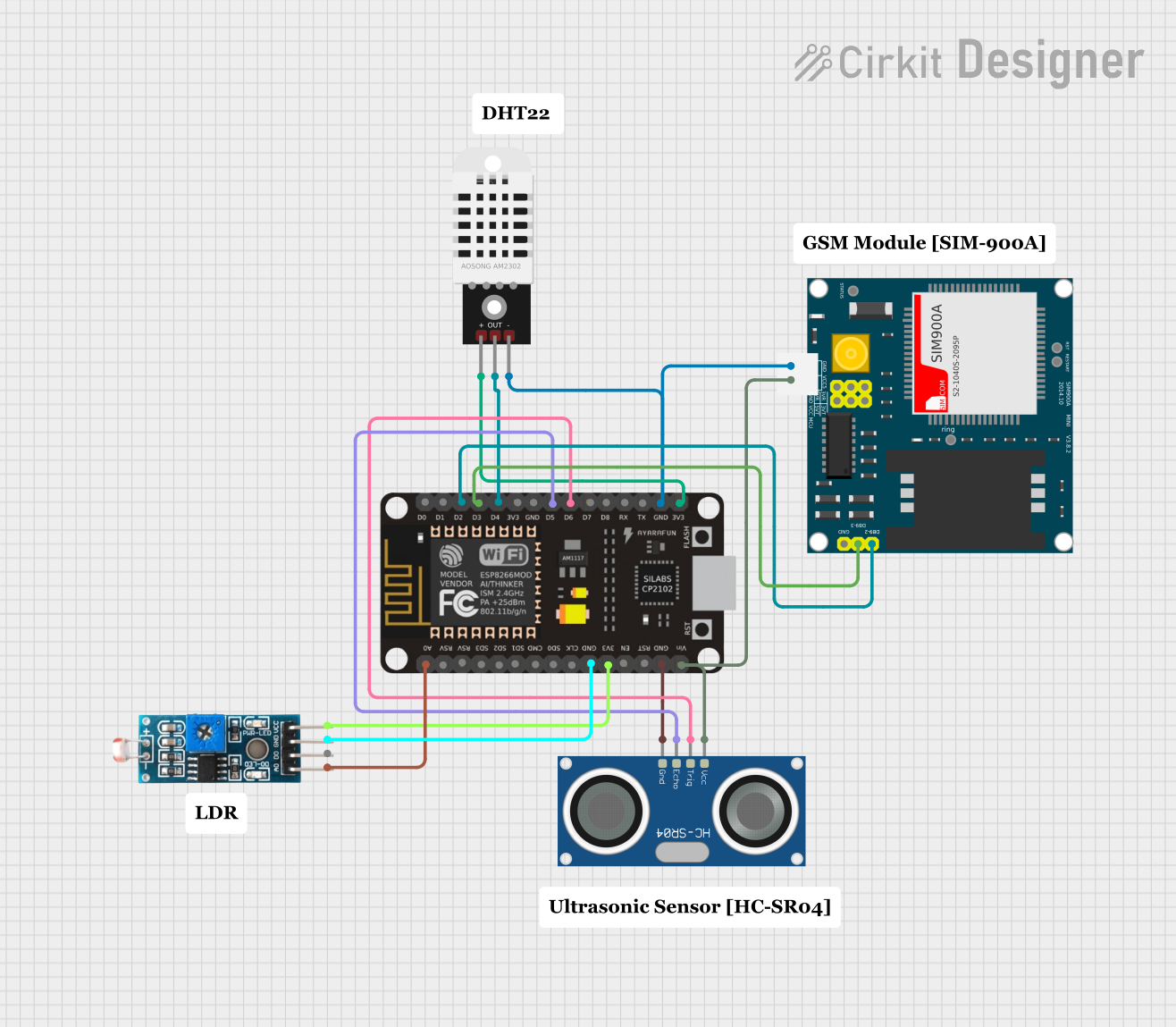
 Open Project in Cirkit Designer
Open Project in Cirkit Designer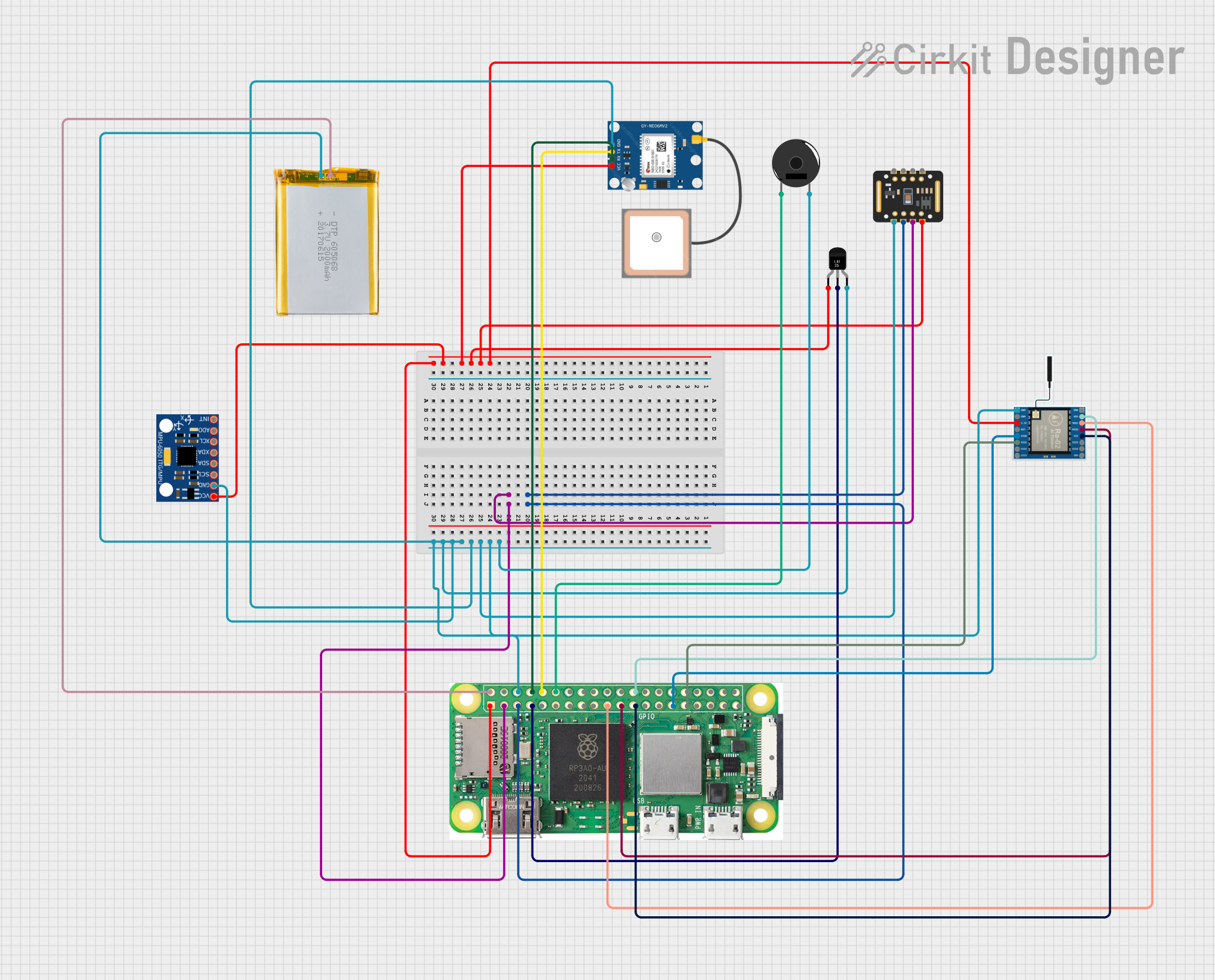
 Open Project in Cirkit Designer
Open Project in Cirkit Designer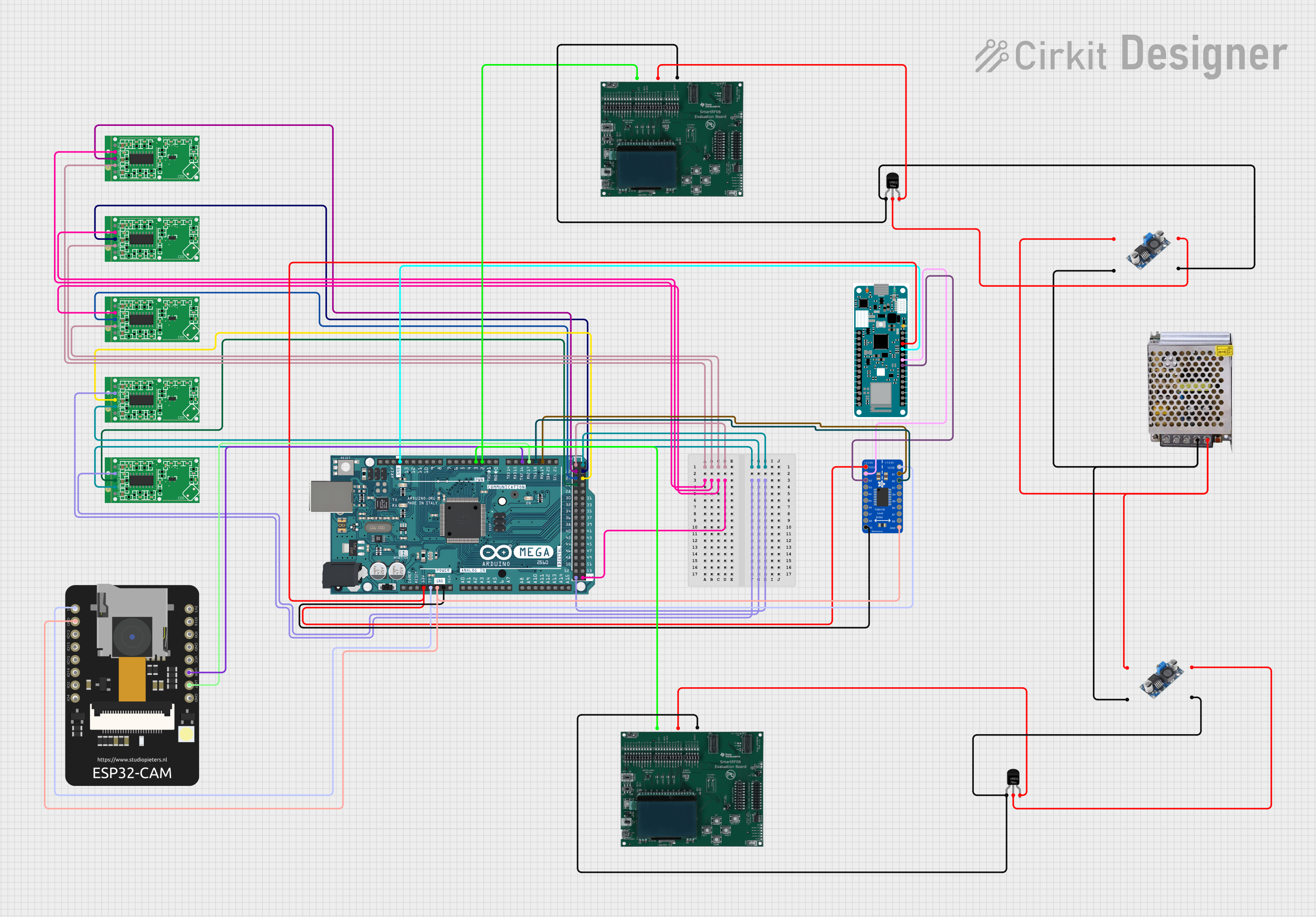
 Open Project in Cirkit Designer
Open Project in Cirkit DesignerExplore Projects Built with LD2420 MMWave Sensor

 Open Project in Cirkit Designer
Open Project in Cirkit Designer
 Open Project in Cirkit Designer
Open Project in Cirkit Designer
 Open Project in Cirkit Designer
Open Project in Cirkit Designer
 Open Project in Cirkit Designer
Open Project in Cirkit DesignerCommon Applications
- Smart lighting systems for automatic on/off functionality
- Security systems for motion detection and intrusion alerts
- Occupancy detection in smart home and office environments
- Gesture recognition and proximity sensing in consumer electronics
- Industrial automation for detecting human presence or movement
Technical Specifications
The LD2420 is a highly capable sensor with the following key specifications:
| Parameter | Value |
|---|---|
| Operating Frequency | 24 GHz |
| Detection Range | 0.5 m to 6 m |
| Detection Angle | ±60° (horizontal) |
| Operating Voltage | 5V DC |
| Operating Current | ≤50 mA |
| Communication Interface | UART |
| Output Data Rate | Configurable (default: 20 Hz) |
| Operating Temperature | -40°C to +85°C |
| Dimensions | 30 mm x 20 mm x 5 mm |
Pin Configuration and Descriptions
The LD2420 sensor module typically has a 4-pin interface. The pinout is as follows:
| Pin | Name | Description |
|---|---|---|
| 1 | VCC | Power supply input (5V DC) |
| 2 | GND | Ground connection |
| 3 | TX | UART transmit pin (sends data to the microcontroller) |
| 4 | RX | UART receive pin (receives data from the microcontroller) |
Usage Instructions
How to Use the LD2420 in a Circuit
- Power the Sensor: Connect the VCC pin to a 5V DC power source and the GND pin to ground.
- Connect to a Microcontroller: Use the TX and RX pins to establish a UART connection with a microcontroller (e.g., Arduino UNO).
- Configure the Sensor: The LD2420 can be configured via UART commands to adjust parameters such as detection range, sensitivity, and output data rate.
- Read Sensor Data: The sensor outputs motion detection data through the TX pin, which can be processed by the microcontroller.
Important Considerations
- Power Supply: Ensure a stable 5V DC power supply to avoid erratic behavior.
- Placement: Mount the sensor in a location free from obstructions for optimal detection performance.
- Interference: Avoid placing the sensor near other devices operating in the 24 GHz frequency range to minimize interference.
- UART Communication: Use a logic level converter if connecting the sensor to a 3.3V microcontroller.
Example: Connecting the LD2420 to an Arduino UNO
Below is an example Arduino sketch to interface with the LD2420 sensor and read motion detection data:
// Include the SoftwareSerial library for UART communication
#include <SoftwareSerial.h>
// Define RX and TX pins for the LD2420 sensor
#define RX_PIN 10 // Arduino pin connected to LD2420 TX
#define TX_PIN 11 // Arduino pin connected to LD2420 RX
// Create a SoftwareSerial object
SoftwareSerial ld2420Serial(RX_PIN, TX_PIN);
void setup() {
// Initialize the serial communication with the LD2420
ld2420Serial.begin(115200); // Default baud rate for LD2420
Serial.begin(9600); // Serial monitor for debugging
Serial.println("LD2420 MMWave Sensor Initialized");
}
void loop() {
// Check if data is available from the LD2420
if (ld2420Serial.available()) {
// Read and print the data from the sensor
String sensorData = ld2420Serial.readString();
Serial.println("Sensor Data: " + sensorData);
}
delay(100); // Small delay to avoid overwhelming the serial buffer
}
Notes:
- The default baud rate for the LD2420 is 115200. Ensure the Arduino and sensor baud rates match.
- Use a level shifter if the Arduino operates at 5V logic levels and the sensor requires 3.3V.
Troubleshooting and FAQs
Common Issues and Solutions
No Data Output from the Sensor
- Cause: Incorrect UART connection or mismatched baud rate.
- Solution: Verify the TX and RX connections and ensure the baud rate is set to 115200.
Erratic or Inconsistent Detection
- Cause: Interference from nearby devices or unstable power supply.
- Solution: Relocate the sensor to a less noisy environment and ensure a stable 5V power source.
Sensor Not Detected by Microcontroller
- Cause: Incorrect wiring or damaged sensor.
- Solution: Double-check the wiring and test the sensor with another microcontroller.
False Positives in Detection
- Cause: High sensitivity or environmental factors (e.g., moving objects).
- Solution: Adjust the sensitivity settings via UART commands and ensure the sensor is mounted securely.
FAQs
Q: Can the LD2420 detect stationary objects?
A: No, the LD2420 is designed for motion detection and presence sensing. It cannot detect stationary objects.
Q: What is the maximum detection range of the LD2420?
A: The sensor can detect motion within a range of 0.5 m to 6 m, depending on the sensitivity settings.
Q: Can I use the LD2420 outdoors?
A: While the sensor operates in a wide temperature range (-40°C to +85°C), it is not waterproof. Use a protective enclosure for outdoor applications.
Q: How do I adjust the detection range and sensitivity?
A: These parameters can be configured via UART commands. Refer to the sensor's datasheet for detailed instructions.
Q: Is the LD2420 compatible with 3.3V microcontrollers?
A: Yes, but you may need a level shifter for proper UART communication if the microcontroller operates at 3.3V logic levels.